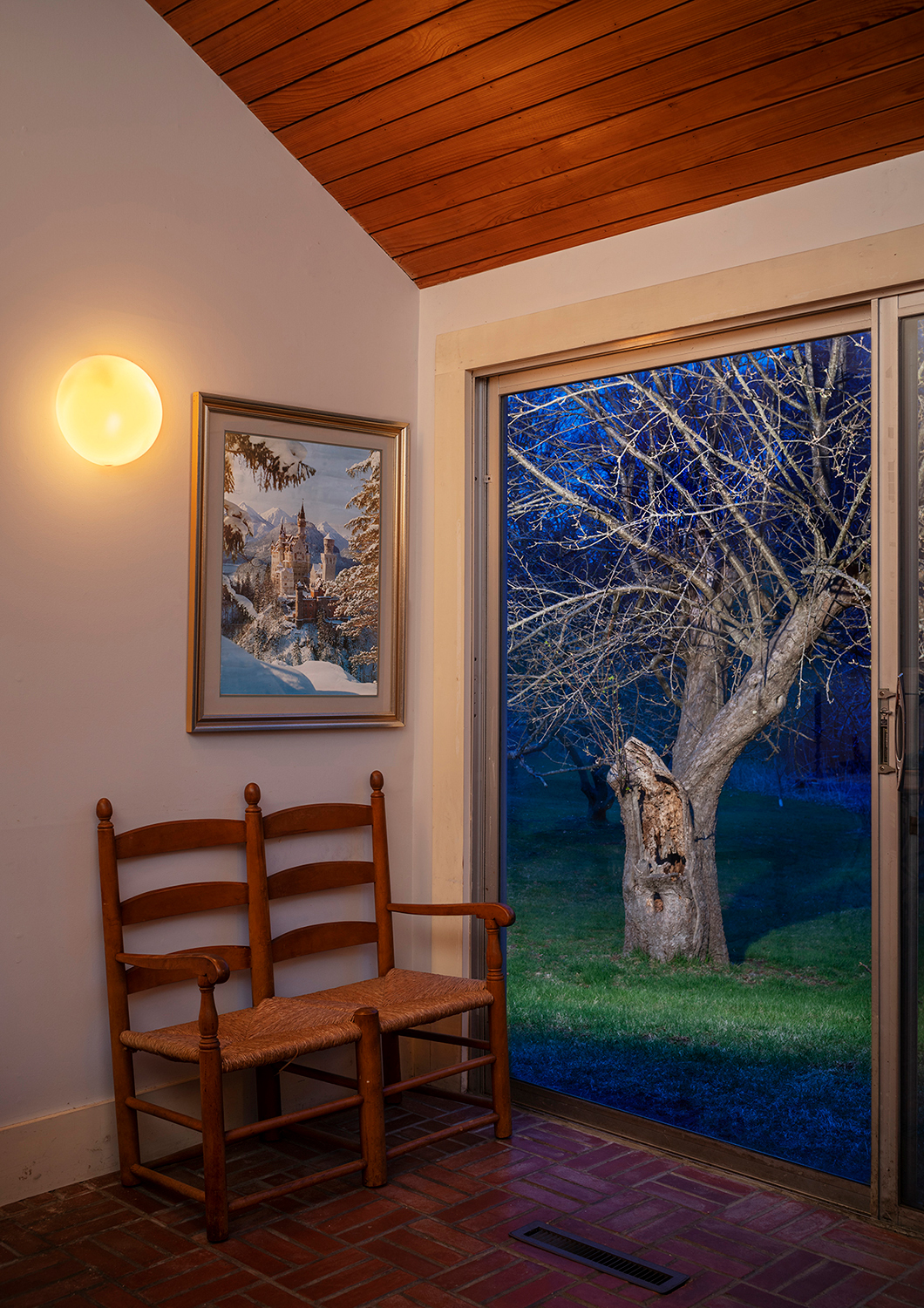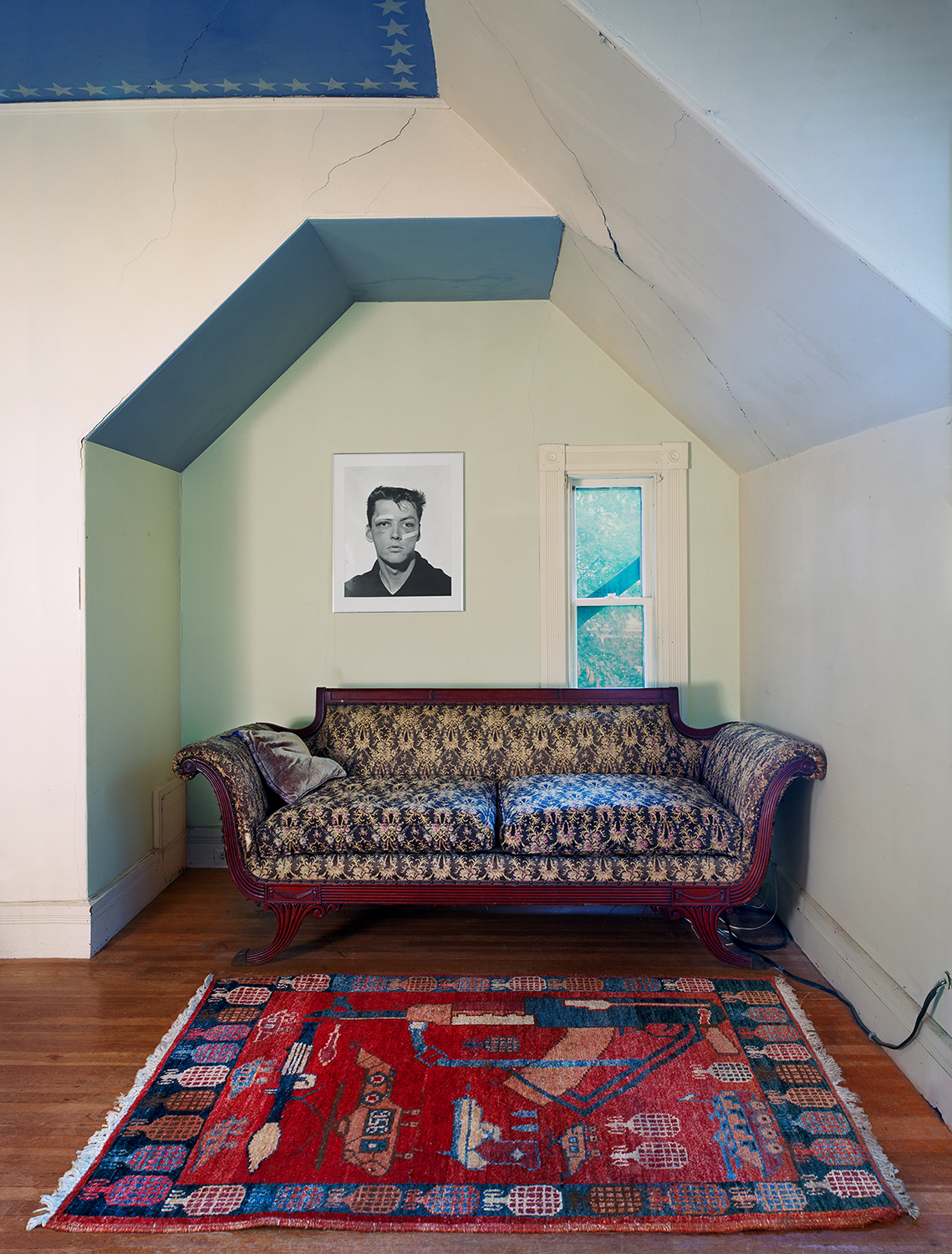Sarah Malakoff: Personal History
This week we are looking at the work of artists who submitted projects during our last call-for-entries–way back in late-2022 (a new call will be going out sometime in the near future, so stay tuned for details…). Today we are viewing and hearing more about Personal History by Sarah Malakoff.
Sarah Malakoff creates large-scale color photographs that are examinations of the home as both a refuge from and a re-creation of the outside world. She has had solo exhibitions at Howard Yezerski Gallery, Boston, Massachusetts, Camerawork Gallery, Portland, Oregon, The Vermont Center for Photography, Brattleboro, Vermont, the Sol Mednick Gallery, Philadelphia, Pennsylvania, Griffin Museum of Photography in Winchester, Massachusetts, and Plane Space, New York, NY. Her photographs have also been shown at The Addison Gallery of American Art in Andover, MA, The NRW Forum in Dusseldorf, Germany, The Carnegie Museum of Art, Pittsburgh, PA, Cleveland Museum of Art, Cleveland, OH, The Corcoran Gallery of Art, Washington, D.C., The DeCordova Museum and Sculpture Park, Lincoln, MA, The Portland Museum of Art, Portland, ME, and The Smith College Museum of Art, Northampton, MA. She received a 2001 and 2011 Artist’s Fellowship in Photography from the Massachusetts Cultural Council and a 2011 Traveling Fellowship from the School of the Museum of Fine Arts, Boston. Sarah Malakoff: Second Nature was published by Charta Art Books in 2013 and Personal History was published by Kehrer Verlag in 2022. She currently resides in Boston, Massachusetts, is an Associate Professor at The University of Massachusetts Dartmouth, and is represented by Anderson Yezerski Gallery.
Follow Sarah on Instagram: @smalakoff
Personal History
For as long as I can remember, I have had a preoccupation with domestic interiors. My long-term photographic project looks at the ways we arrange our most intimate spaces. Our tastes, personalities, quirks and culture are expressed through our décor choices – sometimes intentionally, but often without realizing bits of our most authentic selves have seeped to the surface.
In this body of work, I look closely at objects displayed within American homes that reference history and culture. These items may speak to the ancestral lineage of the occupant, a co-opting of others’ stories, or an aspirational identity. Whether paintings, photographs, or sculptures of historical figures or events, the possessions point to a longing for connection to the past and an engagement with the world at large. Often the collections of objects underscore the privilege and power implicit in the act of collecting. The souvenirs resonate — sometimes humorously, sometimes disturbingly — with the other possessions and architecture that surround them, uneasily vacillating between heroism and kitsch, patriotism and colonialism.
Daniel George: Tell us about the beginnings of Personal History. What motivated the initiation of this specific body of work?
Sarah Malakoff: I have been photographing interior spaces for a very long time and find that different themes and threads interest me as I work. My first book, Second Nature, looked at the home as both a refuge from and a reinvention of the outside, natural world. While shooting, other objects started catching my attention. I noticed portraits displayed in the home and was fascinated by who they represent, what the connection might be to the occupant, and the relationship to other items and architecture. A good number of the portraits, much more than I would have thought, were of figures from history- Marie Antoinette, Napoleon, Yuri Gagarin. With this in mind, I started looking for other possessions that reference historical events and locations. I found these things and their placement within the home variously humorous, touching, and sometimes disturbing.
DG: And taking it way back, where do you suppose your “preoccupation with domestic interiors” originates? How has that interest been sustained through multiple projects?
SM: I’ve been obsessed with interior spaces for as long as I can remember. I was always re-arranging the furniture as a kid and, looking back, it seems to have been an effort to transform my surroundings at a time when not much else was in my power. My favorite places were the period rooms in museums. I would examine the details and imagine the various dramas that may have played out. Furniture and interiors even figured prominently in my dreams and nightmares, always in vivid color which shows up in my work. So, I’ve always connected interiors with imagination and story-telling. My particular interests shift over time, as I mentioned, according to what I find serendipitously in homes as well as issues that are on my mind. I think the act of photographing itself and exploring the new themes has sustained my work through different projects.
DG: Regarding your process, what sort of things do you look for when making photographs? I’m curious how you navigate and interpret others’ spaces with themes of ancestral lineage, co-opting stories, or aspirational identity in mind.
SM: There are many different things I may be looking for when I seek out homes and objects to work with. On a formal level, I’m a fan of bright color and bold pattern and ways those are used within a home. I love how light, especially the mix of exterior and interior light can add to the narrative. In terms of furnishings and possessions, I’m looking for moments when things resonate with each other. It’s the juxtaposition of those objects and placement within the architecture of the room that fascinates me —that a replica of The Horse of Selene from the Parthenon is in a modern, disorienting kitchen with Kyra Sedgwick in an episode of The Closer on the TV. There is the painting of George Washington humorously suspended above a double bed; a collection of Jackie Onassis memorabilia and books in a Pepto-Bismol pink room; a bust of Caesar on a light-up Ionic column with a practice golf set propped beside it. A Native American Chief painted on black velvet is a questionable appropriation that is amplified by the cowboy-themed wallpaper and the other toys and books in the room. Often there is an uneasy vacillating between heroism and kitsch, patriotism and colonialism, personal connections and the desire to appear worldly within these rooms.
DG: Your captions draw attention to very specific elements within each photograph, yet you have adopted (in most instances) a comprehensive view of the space. Why did you feel is was important to provide such a broad frame of reference while also directing us toward particular items?
SM: I’ve always struggled with titles. I used to leave everything Untitled because I didn’t want to direct the viewer in any way. For me, the viewer’s own imagination of what the place is or who might live there is key. But leaving all images Untitled leads to a lot of confusion and chaos. With earlier work, I started titling images with an identification of something that was in the image in a very general, neutral way- like Green Sofa. With the images in Personal History, it was important to me that they all have this link of a reference to history. But some of those objects are small or represent a figure or event that may not be recognizable to all viewers. By identifying that object, I hoped the viewer would think about its significance but more broadly, weave it into the narrative of the entire scene.
DG: Like you, I am very much interested in how individuals choose to adapt their homes/rooms/etc. and how identity is manifest through décor. Could you elaborate on your thought that these choices are a demonstration of “our most authentic selves?” What sort of insights has this work given you on the topic?
SM: I think that our home décor is often a result of random or even contradictory forces. Many of us try to create a home by carefully choosing what is on display and what is hidden away. We try to surround ourselves with items that express our personality, style, values, and interests. As when I mentioned rearranging the furniture when I was a child, I think this is a way to exert some control in a world that can feel like it’s running off the rails – to both make it comforting and to signal to others these aspects of ourselves. But unlike architectural and interior design magazines, it’s not usually a coherent, fully chosen environment. Most of us have a few prized possessions we’ve picked along with inherited or thrifted objects. Some are things from our childhood or past that have been collected over time and may have become taken for granted or unexamined. Yet they still represent a part of our own history, identity, and subconscious. It’s the resonance and friction between these things that creates a more nuanced portrait of an individual and a more complex narrative.
Posts on Lenscratch may not be reproduced without the permission of the Lenscratch staff and the photographer.
Recommended
-
Aaron Rothman: The SierraDecember 18th, 2025
-
Gadisse Lee: Self-PortraitsDecember 16th, 2025
-
Scott Offen: GraceDecember 12th, 2025
-
Izabella Demavlys: Without A Face | Richards Family PrizeDecember 11th, 2025
-
2025 What I’m Thankful For Exhibition: Part 2November 27th, 2025
































































